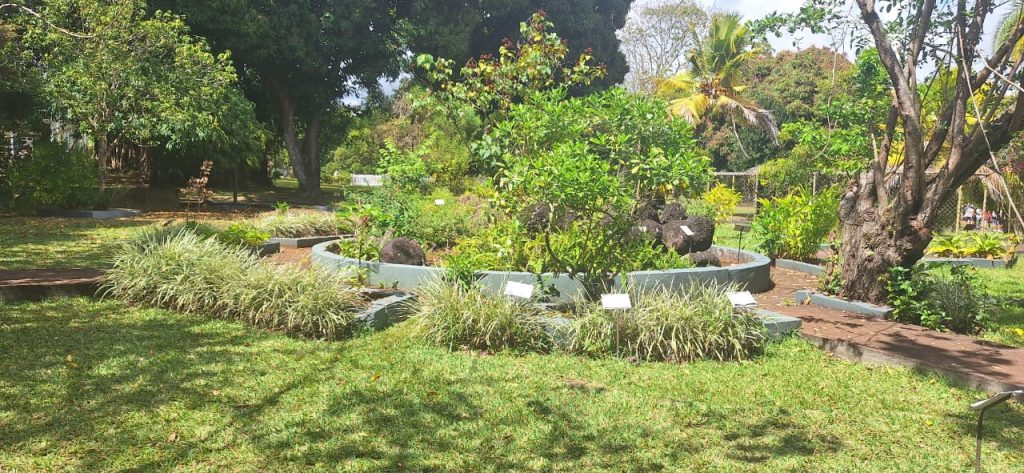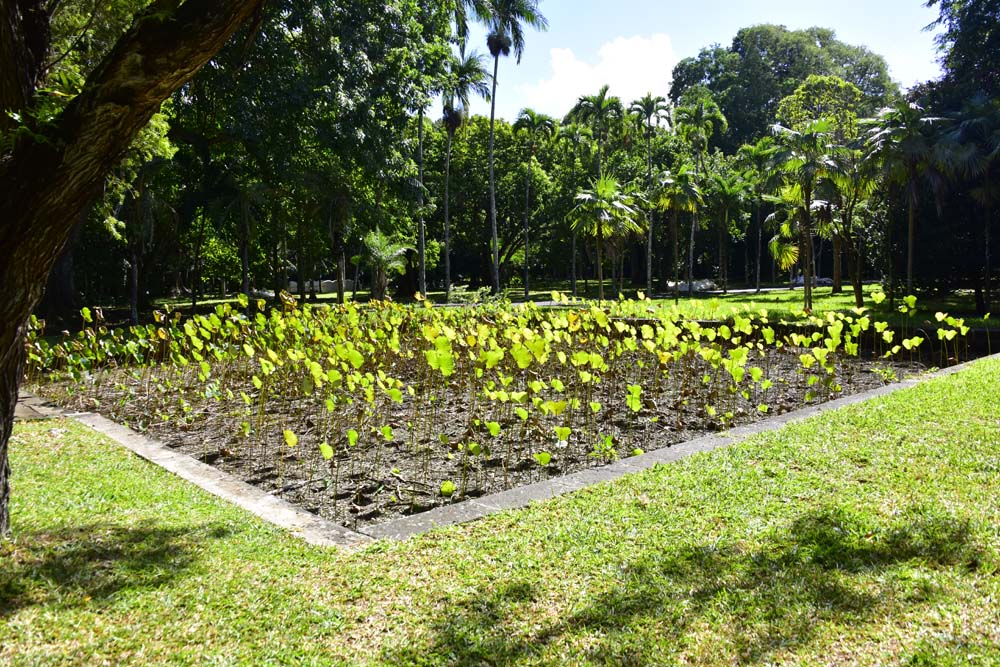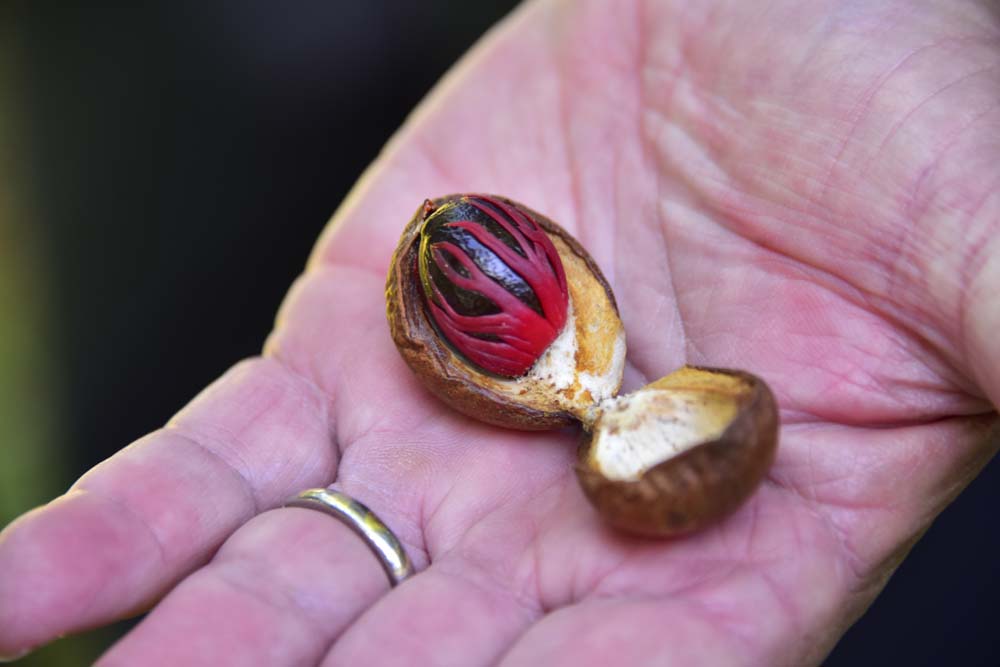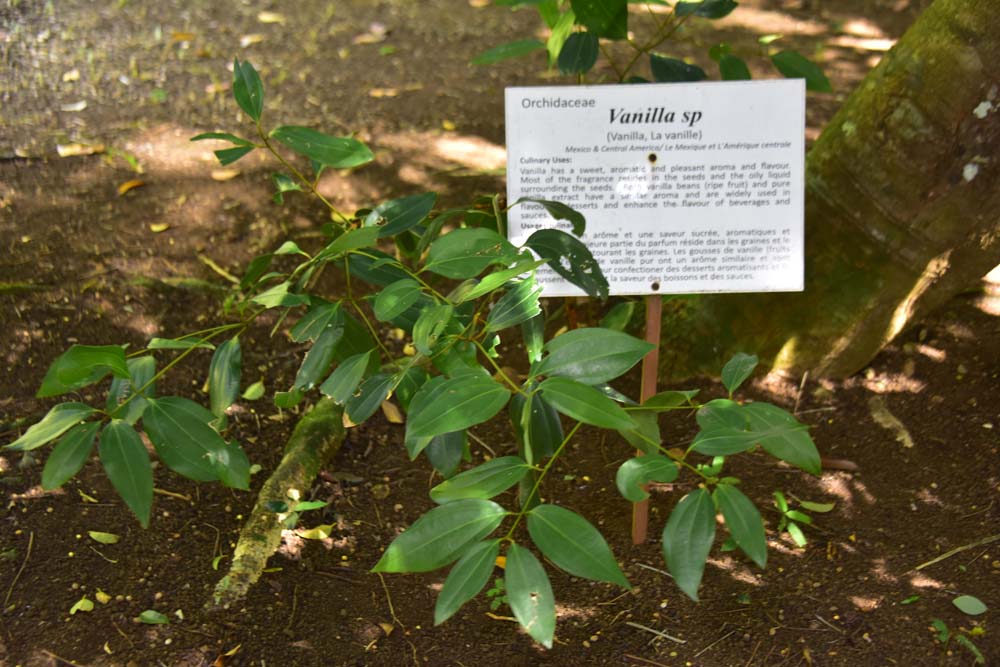The Spice Corner
Spices from the tropics have always attracted traders from temperate countries. Several old cities in Europe such as Venice, derived their wealth from the trade of tropical spices.
As the spice trade was formerly controlled in Europe, spices provided an incentive for European travellers and explorers to undertake perilous voyages to Africa, the Americas and Asia. They discovered new sea routes to reach these far-away places.
The Spice Corner is close to the Lienard Obelisk that is, at the corner of Labourdonnais and Lienard avenues. The cultivation of nutmeg (Myristica fragrans), clove (Syzygium aromaticum), and cinnamon (Cinnamomum verum) in the garden of Pamplemousses has been a tradition since June 1770, when Pierre Poivre introduced the first two spices from the island of Banda.
Nicolas Céré, the Director of the Garden, in October 1776, witnessed the fruiting of the first cloves at ‘Mon Plaisir’ and two years later, in December 1778, the fruiting of the nutmeg.
It is worth mentioning that much of the labour used in the Garden was slave labour. In 1761, there were some 14 enslaved persons from India, Senegal, Mozambique and Madagascar aged between 15 to 50 years. The slave gardeners also lived in the Garden or nearby.
This number increased under Poivre and Céré. Some such as Rama, became very skilled at plant propagation and were sent overseas to train other gardeners in French colonies. They were later freed as a reward for their services to Ile de France.
It was also from Mauritius that clove was introduced in Zanzibar in 1818. Zanzibar ranks amongst the most important producers of this spice.
Nutmeg (Myristica fragrans) has separate male and female trees. The male tree bears small bell-shaped creamy yellow blooms whereas the female tree produces a pale amber fruit that resembles a large apricot. When ripe, about six to nine months after flowering, the husks of the fruit splits open and discloses the glossy dark-brown nut (seed) almost surrounded by a red mace. Both the mace and the nut are used as spices.
Cloves (Syzygium aromaticum) are dried unexpanded flower buds, which are picked green and spread out in the sun for a few days to dry and become dark-brown in colour.
Cinnamon (Cinnamomum verum) is a moderate size tree (8 to 15 metres tall) from Sri Lanka and South India. The alternate leaves have three to five nerves. It is the bark that is used as a spice. Cinnamon oil is the product of distillation of various parts of the plant and is used in commerce.
Other spices, such as pepper (Piper nigrum) and aromatic plants like Bayrum (Pimento racemosa) from the West Indies and Pimento also known as ‘Allspice’ or ‘Quatre Epices’ (Pimento dioica) from Central America are grown in several parts of the garden. The fruits and leaves of the latter are said to combine the flavour of pepper, cinnamon, nutmeg and clove.

The Medicinal Garden
The Medicinal Garden was created in 1995 with the collaboration of the Chinese Agricultural and Technical Team (CATT). It covers a total area of 1155 square metres (35m by 33m) and is located at the corner of Shrimati Indira Gandhi Avenue and the one that leads to the Old Sugar Mill Model.
The medicinal corner has been restored in May 2009 and now comprises of some 150 species which further add to the Botanical collection of the Garden.
It is a place where visitors can stroll and learn about the properties of the 150 different plant species used in traditional medicine. It must be borne in mind that these properties have not been clinically tested but are reported to bring a certain amount of relief to those who use them.

The Plant Genetic Resources Corner
In 2000, a ‘Plant Genetic Resources Corner’ (section Y1) of about four hectares was established. It is found behind the Château Mon Plaisir on the site of the former Experimental Station run by the Agricultural Services and the Mauritius Sugar Industry Research Institute.
It is part of the Food and Agricultural Research and Extension institute (FAREI).
A nursery has also been created to assist in the work undertaken at the ‘Plant Genetic Resources Corner’ and elsewhere in the garden. Rare endemic and indigenous plants are being raised to save them from extinction and to be planted in the garden. It works in close collaboration with the Plant Genetic Resources Unit and other Institutions of the Ministry of Agro-Industry and Food Security. Plants are on sale to the public.



